IAMCC Talk: The Visualization of Hypotheses as a Balancing Act Between Science and Illustration
When and Where
Speakers
Description
Event: Hybrid
Date: Saturday March 16, 2024
Time: 11am – 12:30pm (includes lunch for participants)
Venue: Seminar Room, SS 6032, Department of Art History
In-person Event: Register Here – Space is Limited (Capacity Restricted)
Virtual Event: Register Here
It is the digital in the digital humanities that awakens both expectations and desires that can lead to epistemological aberrations. This applies in particular to the impact of images. Whereas in the pre-digital world, images that could be recognised as comparable to physical reality were firstly rare and secondly often from the world of fine art such as oil paintings, which have always had an artistic dimension as their primary connotation, images generated with the help of computers, and even more so today with the help of AI, seduce the viewer into believing that what they see is an authentic vision equivalent to physical reality as soon as it resembles physical reality. This also applies when it is obvious that the images cannot be photographs, simply because they contain historical content dating back to antiquity. Early architectural testimonies of Islamic art are likewise affected. As such, the visualisation of the reconstruction hypotheses of the Taq-e Kisra in the Sasanian summer residence Ktesiphon— a research collaboration with the Museum of Islamic Art in the Pergamon Museum Berlin, exhibited there and in the Sharjah Museum of Islamic Civilization, Sharjah, United Arab Emirates — was realised using the author’s “Visualisation of Uncertainty” method, the aim of which is to correspond as closely as possible to science in geometry through abstraction and at the same time to portray it as realistically as possible through “virtual photography”.
Biography
Dominik Lengyel has been a full university professor and Chair of Architecture and Visualisation at the BTU Brandenburg University of Technology Cottbus-Senftenberg since 2006. He studied mathematics and physics for a year before studying architecture at the University of Stuttgart in Germany, where he graduated with distinction and an architecture prize in 1997 after two years abroad at the Ecole d’Architecture Paris-Tolbiac and ETH Zurich in Switzerland. He worked as an architect in the planning department of the architectural office of Prof. O. M. Ungers in Cologne, Germany, where he also founded an office for architectural visualisation together with Catherine Toulouse. He first became a deputy professor, then a full professor at the Cologne University of Applied Sciences and was offered a position as a full professor in Mainz, which he had to turn down due to the call from the BTU. He is a member of the European Academy of Sciences and Arts in Salzburg. His research projects are funded by the German Research Foundation (DFG), the private German Gerda Henkel Foundation for Historical Humanities and the Federal Ministries for Education and Research (BMBF), for Economic Affairs and Energy (BMWi) and for the Interior, Building and Housing (BMI), among others.


